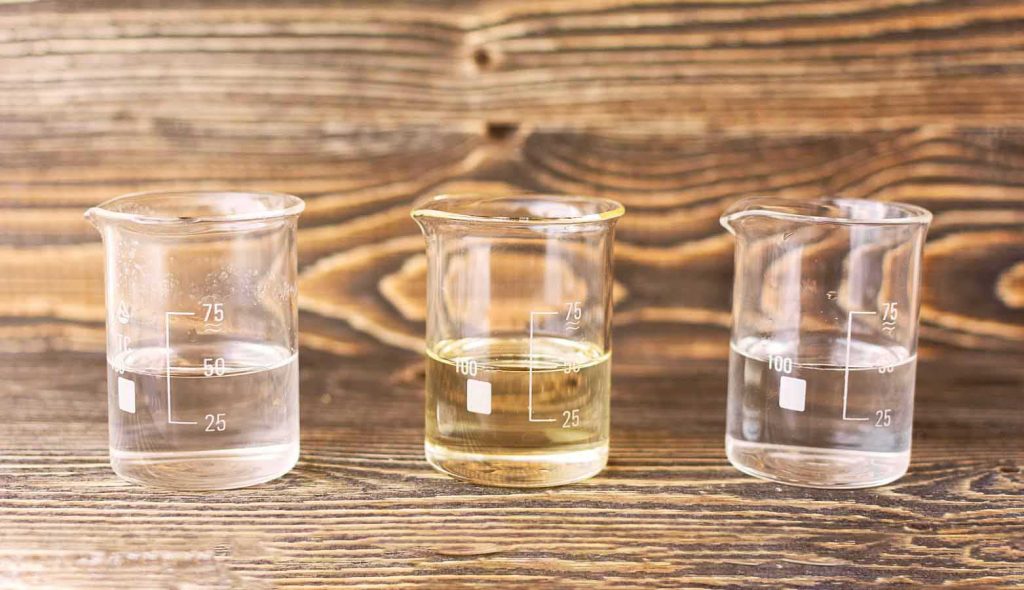Did you know that research shows that children’s curiosity makes them natural explorers of STEM topics? It’s true! While you’re going throughout your day, playing blocks with your child, changing their pants after a roll in the dirt, or thinking that they couldn’t possibly ask another question, you might not realize that you have a budding scientist on your hands.
Your best parental move? Encourage exploration and experimentation early and often while incorporating some fun science experiments for kids.
“When you introduce scientific thinking to your child as a parent, you build a foundation for learning, the ability to think critically, and raise your child’s confidence levels,” says Erica Peterson, founder of Science Tots, an organization committed to early STEM education.
You don’t have to set up a lab in the middle of your living room, though—because we have three easy (and fun) oil and water experiments, along with three mini-science lessons, that you can do in 30 minutes or less to inspire curiosity in your kids.
Kitchen Materials Needed for the Experiments:
- Glass jar with a lid
- Water
- Vegetable oil
- Dish soap
- Food coloring
- Pipette, dropper, or syringe
- Small container or bowl
- Table salt
Mini-Experiment #1: Teaching Basic Chemistry Through The Rules of Attraction
Many students find chemistry to be their most difficult subject, but if you instill basic concepts (like the rule of attraction) at a young age, your child can find it energizing instead of challenging. Plus, we love this easy kitchen science experiment because you likely have all the ingredients in your cabinet.
What to Do:
- Fill the glass jar about halfway with water. Fill it the rest of the way with vegetable oil.
- Ask your child(ren) what they see. Did the oil and water mix?
- Now, shake up the water and oil mixture. Did it mix now?
The Basic Chemistry Experiment, Explained:
The water and oil don’t mix because they are immiscible, meaning the water molecules are attracted to the water and the oil molecules are attracted to the oil. Even when you shake it up, as soon as the molecules settle they separate. And, the water is always on the bottom because it has a higher density than the oil. By seeing this firsthand, your children are getting a glimpse of what it means when the chemical compositions of liquids are different from one another. The sizes of oil and water molecules are different, and so are their forces of attraction.
Mini-Experiment #2: Good, Clean Fun to Understand Emulsion
Now, let’s take the rules of attraction further by introducing emulsion. The simple definition? Emulsion is what happens when two liquids that don’t normally mix, mix. It’s a good way to explain what they just learned (and we’re pretty sure any child will jump at the chance to use food coloring).
What to Do:
- In a small bowl, combine a tablespoon or two of dish soap with a drop or two of food coloring. Mix to combine.
- Using the dropper, put a few drops of the colored solution into the jar you just used, with the water and oil. You should see an effect similar to a lava lamp. Challenge your children to try to explain what happened (after all, you just taught them that oil and water don’t mix).
The Emulsion Experiment, Explained:
So, what caused this? The dish soap is attracted to both water molecules and oil molecules, which is why it forces them to mix. The soap acts to dissolve the oil, allowing the oil and water to mix together. The oil molecules are suspended in the dish soap, which is suspended in the water. This demonstrates emulsion, and it’s why dish soap cleans so well!
Mini-Experiment #3: Get Salty to Explore Density
Our last mini-lesson is in density (AKA mass per unit of volume or the amount of stuff in a given amount of space). If an object is heavy and compact, it has high density. If an object is light and takes up space, it has low density.
We also love this lesson because it’s a fun way for your children to visualize what can feel like an abstract concept.
What to Do:
- Pour a tablespoon or so of salt into the jar. Let your child experiment with starting with a pinch and gradually adding more. It’s a great sensory experiment for children to watch the movement in the jar.
- Again, you should get a lava lamp effect.
The Density Experiment, Explained:
In the beginning of the experiment, the oil settles above the water because it is less dense. Because the salt is heavier than the water, it floats straight to the bottom, bringing some of the oil with it since the oil is on top. But, as the salt starts to dissolve in the water, it releases the oil which floats back up to the top.
Ask your children what’s more dense: oil, water, or salt? Then, encourage them to experiment with different jars, food colorings, food (will sugar do the same thing?), or anything else they want to test. It’s sometimes about the scientific journey more than the result—and by encouraging them to experiment and research, you’re encouraging their scientific development.
Ask your kids to write down what they learned (some definitions to keep handy: molecules, immiscible, emulsion) during these oil and water experiments for kids. Keep the conversation, curiosity, and kitchen science going with a science journal to document your findings. You might just find that you have the next Marie Curie on your hands!




